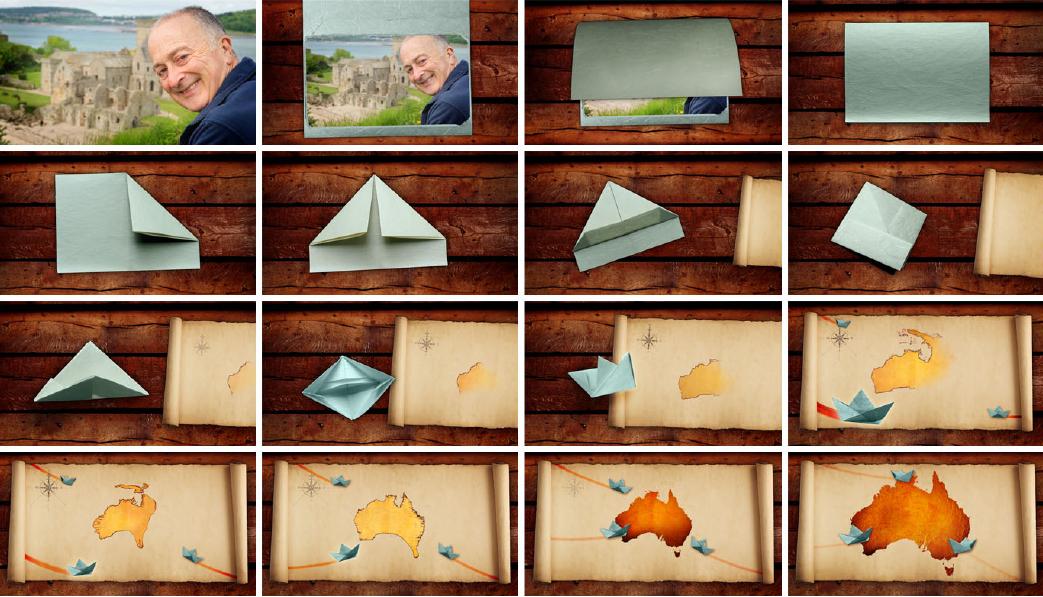From storyboard to screen
 In this guest post, Popcorn Creative’s Matthew Packwood discusses the production of the graphics for Tony Robinson Explores Australia.
In this guest post, Popcorn Creative’s Matthew Packwood discusses the production of the graphics for Tony Robinson Explores Australia.
We were commissioned by WTFN, to produce the broadcast brand, full graphics packages for the new series Tony Robinson Explores Australia which premiered on May 3 on the History Channel in Australia. It will also be distributed to the UK. The creative process used a stop animation technique and we executed a comprehensive shoot to deliver opening titles using a modern stop motion animation style of unfolding origami as a style reflecting the host’s story-telling personality supported with detailed animated in-show travel maps. We think the result is bold and entertaining, complimenting the host and appealing to the target audience.
The production process commenced with an undertaking of a comprehensive and collaborative brief with WTFN. It was here that an origami stop animation concept was agreed upon because we thought that this actually depicted how the TVpresenter would/could present his story and was representative of his style of storytelling. We then delivered a presentation of style stills and references to sharpen our direction as a concept board presentation. At this stage, we undertook an initial shoot test (on a high res stills camera), where we integrated some of the elements into the storyboard. Then a 24 style-frame story board was presented which detailed the colour palette, opening title sequence, broadcast brand.
Following this, we developed and presented storyboard #2, which detailed in program maps to facilitate the story telling process. We produced a template version for WTFN to use in the edit and produced a final set of maps. Maps and on-screen graphics made up roughly 50 percent of the project so were significant in overall work.
Storyboard #3 incorporated client amends which were small, but very effective to enhance final product for maps and on-screen graphics. We delivered temporary still maps for WTFN to use in the offline edit. From that point we also shot a whole heap of stills that we integrated into maps and other componentary. From here a timing edit was approved and we started production of maps in high res photoshop. In all, we delivered four maps and four components in the first round of masters and for final delivery we created maps for the first episode and 6 after-effects templates for WTFN to use for the duration of the series.
We then started the production of the opening titles sequence where we executed a shoot on a green background in studio and shot the origami paper boat folding up to make a boat, the scroll unrolling, the book jacket that holds Tony Robinson moving and other paper used in the sequence. We also created four transitions and re-created two backgrounds for the closing title and we created style guides for WTFN to use for in program graphics. With all these elements, we started building the opening title sequence from a 30-part storyboard for the opening sequences and a four-part storyboard for the maps.
We pride ourselves on delivering a comprehensive story boarding process that comes out of a collaborative and detailed initial brief process to deliver a high quality broadcast brand package in full HD. Overall the project adds a new twist to an old technique ‘stop motion animation’ by shooting multiple items individually and compositing them together to deliver a more modern approach to stop motion animation.



